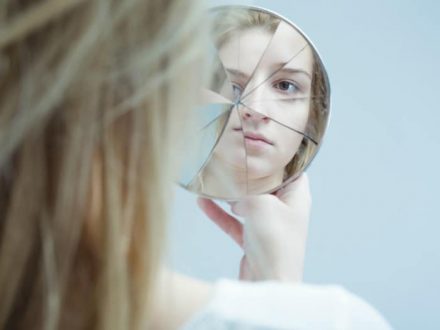Asomatognosia is a subjective experience of one’s own body. It is primarily a physical sensation, i.e., the loss is somesthetic (“pure asomatognosia”). This condition is frequently accompanied by the feeling of being disempowered about one’s body part.
Asomatognosia is a general term for a unilateral impairment of bodily ownership that usually occurs after a stroke to the right hemisphere. Asomatognosia has traditionally been separated from somatoparaphrenia, which involves illusionary, confabulatory, or delusory ideas of misidentification of the injured body part. Asomatognosia is now recognized as a distinct, contralesional condition of bodily ownership.
Asomatognosia Symptoms
Asomatognosia is defined as an inability of a body to recognize its own. So, the disturbance in one’s normal awareness of one’s own body is usually accompanied by one or more of the symptoms listed below:
(1) A propensity to overlook or disregard one side of the body.
(2) A failure to notice or trouble identifying a certain body portion.
(3) Difficulties distinguishing between the right and left sides of the body
(4) Detecting impairment in a bodily portion (anosognosia).
Asomatognosia Causes
Asomatognosia is most commonly caused by injury to the right parietal lobe. According to studies, damage to the right hemisphere is frequently caused by a lesion or pre-existing hemispatial amnesia, or indifference to the left visual field.
Acute or subacute brain lesions are the most prevalent cause of asomatognosia, which can affect one or both sides of the body. The majority of the time, unilateral neglect affects one complete side of the body, most commonly the left.
The acute or subacute causes of Asomatognosia may manifest themselves in the failure to shave the affected side of the face, the wearing of only one glove on one hand, or the decreased usage of the implicated limb for specific activities, despite its physical capability.
Asomatognosia Treatment
The possible treatment for asomatognosia is regular assistance, both at home and in the family, planning ahead of time, and collaborating with a positive attitude will all help with long-term, everyday care management.
Vestibular caloric stimulation is one of the treatments for Asomatognosia. The patient must wear special glasses that cause a deflection of the entire visual field towards the lesional side. The impact of indirect visual input on one’s body image can be investigated using mirrors.
Asomatognosia v/s Anosognosia
Anosognosia is a hallucination in which a patient with a disability or illness is unable to recognize that he or she has a disability or sickness while Asomatognosia is an inability of any body part to sense its ownership, especially the left limb.
Right-hemiparesis-related anosognosia and asomatognosia are more common in patients with right-brain lesions than in those with left-hemiparesis-related conditions. Anosognosia and asomatognosia are both frequent after the acute malfunction of the cerebral hemisphere
Different abnormalities of a basic antagonism between bottom-up sensory and emotional stimuli can be classified as Asomatognosia and Anosognosia. Anosognosia and asomatognosia are both prevalent symptoms of non-language-dominant cerebral hemisphere impairment.
A therapist can potentially use a technique known as motivational improvement treatment (MET) for the treatment of Anosognosia while on the other hand Asomatognosis can be treated through vestibular caloric stimulation, and glasses.
Anosognosia and Asomatognosia both were recognized as remarkable symptoms that were frequently noticed and linked to right hemisphere impairment.
In Asomatognosia, the body can be totally or partially forgotten, rejected, ignored, or even disowned as a result of neurological damage.
so, in comparison both the diseases differ in their treatment and diagnosis but are similar to some extent in their causes and symptoms.
 Health & Care Information
Health & Care Information 


